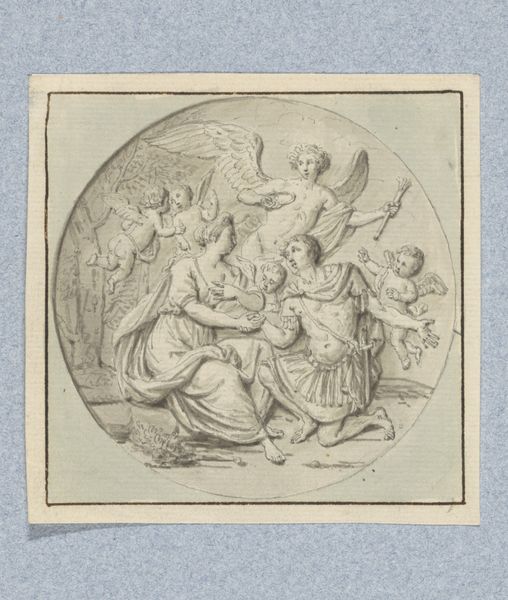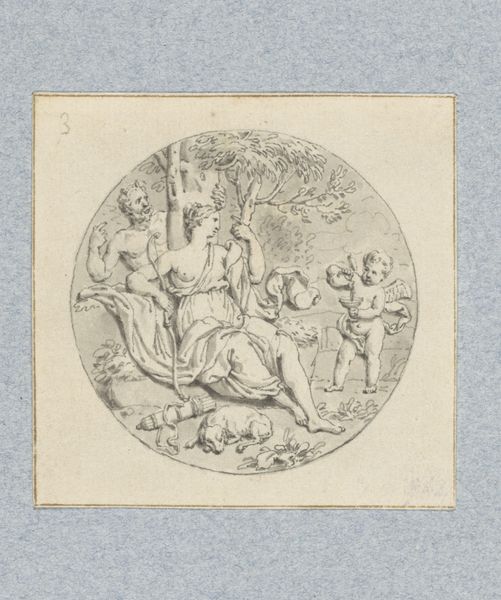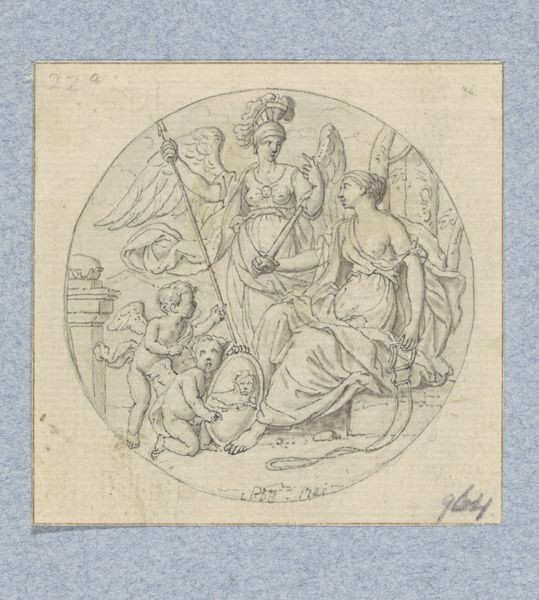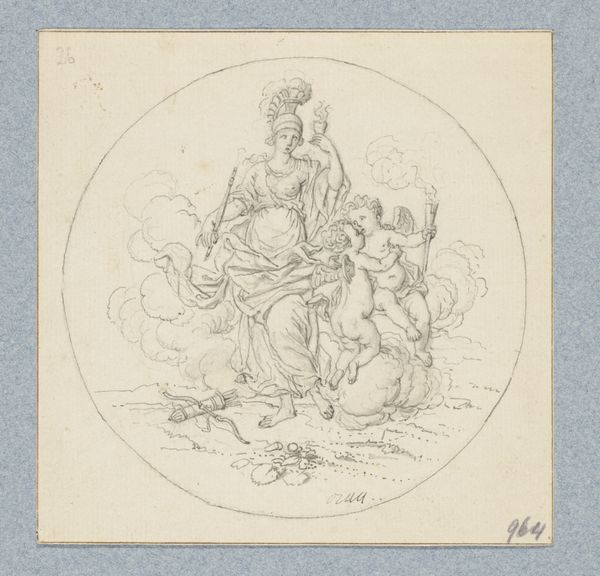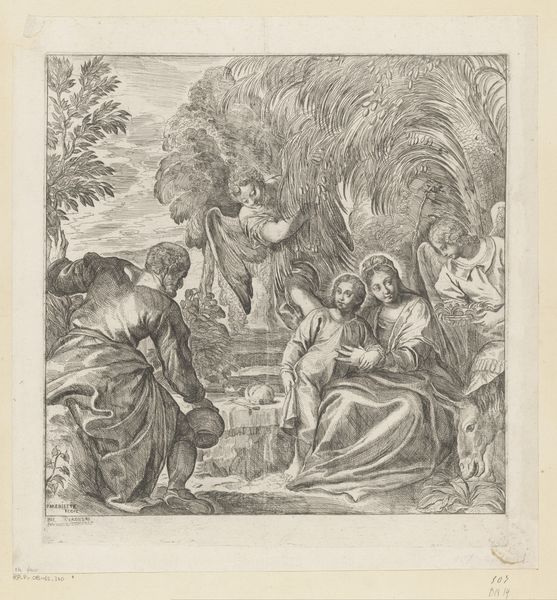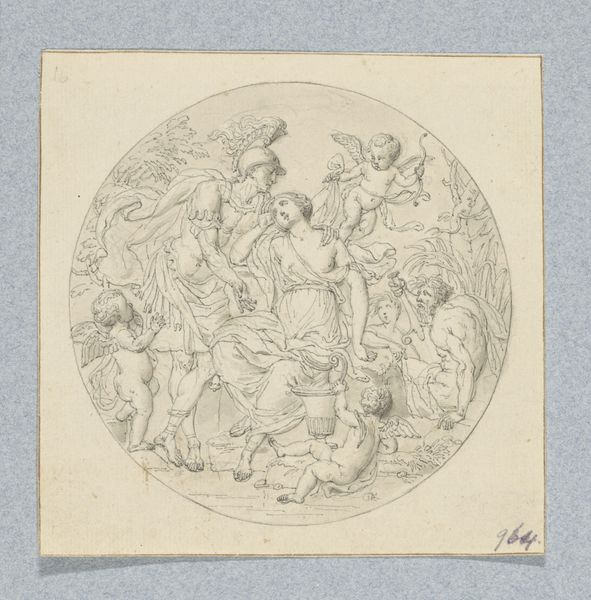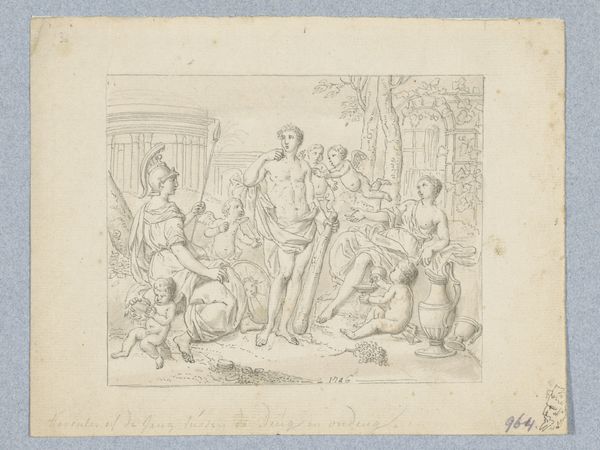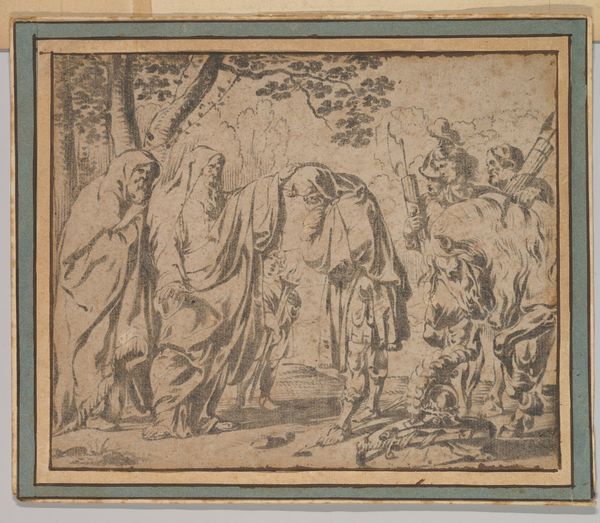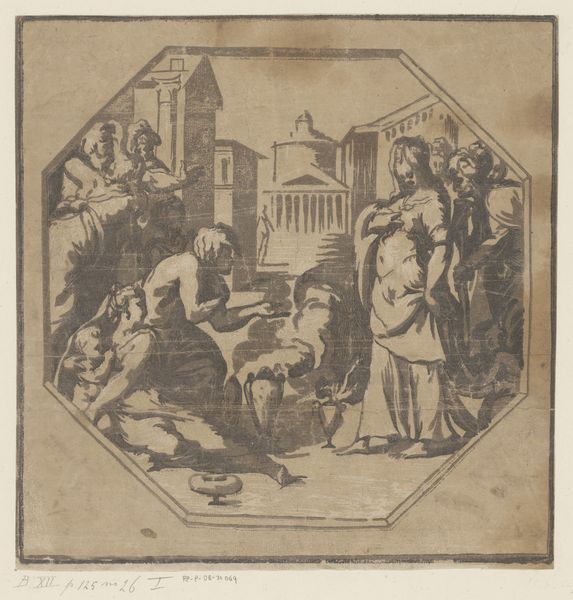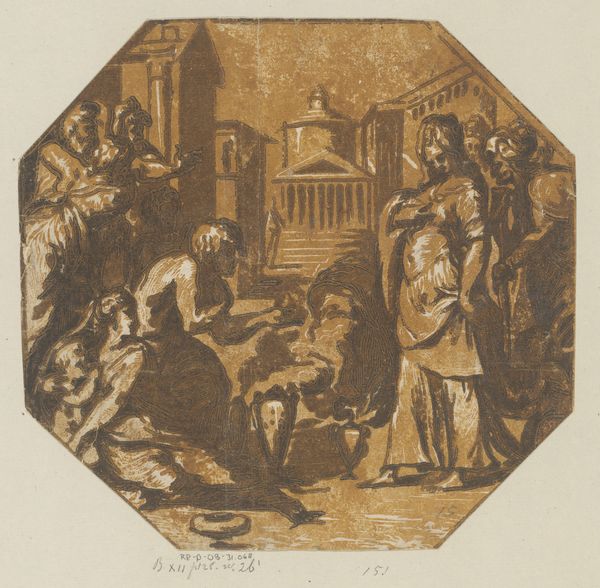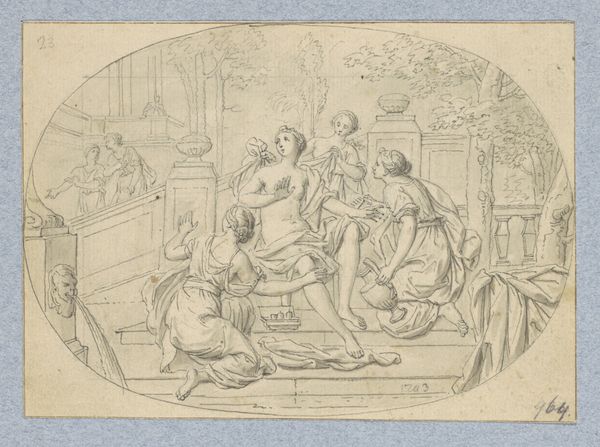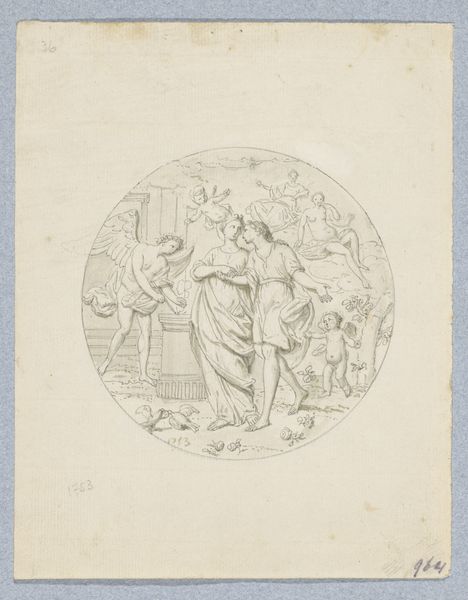
drawing, paper, pen
#
drawing
#
aged paper
#
paper non-digital material
#
allegory
#
narrative-art
#
sketch book
#
classical-realism
#
personal journal design
#
figuration
#
paper
#
11_renaissance
#
personal sketchbook
#
sketchwork
#
journal
#
line
#
sketchbook drawing
#
pen
#
storyboard and sketchbook work
#
sketchbook art
Dimensions: height 120 mm, width 120 mm
Copyright: Rijks Museum: Open Domain
Curator: This drawing, "Pietas (in doos met 43 tekeningen)," by Louis Fabritius Dubourg, was created in 1746 and now resides in the Rijksmuseum's collection. It's rendered in pen on paper. What are your first thoughts? Editor: The circular composition immediately strikes me as deliberate. The muted tonality of the drawing imparts a dreamlike quality, emphasizing the age and the fragility of the materials, of both the paper and ink. Curator: Indeed. The line work, though delicate, is quite assured. Notice the contrast between the classical architecture on the left and the naturalistic elements on the right, complete with an elephant in the background. This juxtaposition reinforces the central theme of "Pietas"—devotion or duty. Editor: I'm drawn to the materiality itself. The aging paper and the ink bleed hint at the time and labor invested in this work. What stories could the artist tell through his craft, his daily toil, that aren’t obvious at first glance? This wasn't mass produced, was it? It was crafted. Curator: Exactly. Furthermore, examine how Dubourg uses allegorical figures, such as the putti and the central female figure, to evoke virtue and moral duty. Semiotically, the placement and actions of the figures contribute to this construction of piety. It seems she is almost conducting a rite of passage or summoning with her extended hand. Editor: It really urges me to consider the colonial backdrop as well, if this was rendered in pen and ink. Thinking about where these raw materials came from, and who was behind the physical labour to gather the pigments, grind them into usable materials... It adds complexity to "piety". Curator: That's an intriguing layer to consider. It also prompts us to recognize art is a product and a representation, that can embody numerous perspectives, even if conflicted. Editor: True. Reflecting on it now, it enriches my comprehension, to see the drawing’s layers as palimpsestic - echoing production. Curator: And for me, it's about decoding how carefully considered compositions create meaningful, enduring dialogues on moral imperatives.
Comments
No comments
Be the first to comment and join the conversation on the ultimate creative platform.
